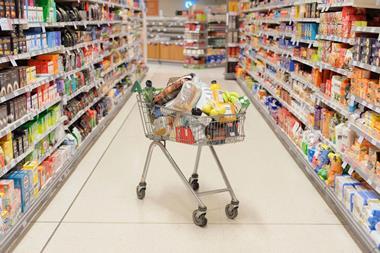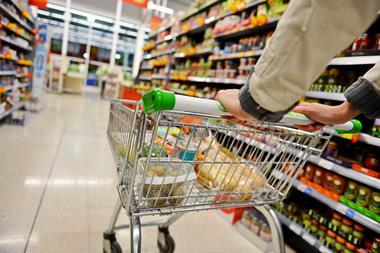Grocery prices have fallen for the second month in a row, but inflation is still at the third-highest rate since records began in 2008.

Food inflation fell for the second month in a row to 17.2% for the four weeks to May 14, 2023, according to the latest grocery price inflation data from Kantar.
Take-home grocery sales rose 10.8% over the month compared with the same period last year.
Kantar head of retail and consumer insight Fraser McKevitt said: “The drop in grocery price inflation, which is down by 0.1 percentage points on last month’s figure, is without doubt welcome news for shoppers but it is still incredibly high – 17.2% is the third-fastest rate of grocery inflation we’ve seen since 2008. This could add an extra £833 to the average household’s annual grocery bill if consumers don’t shop in different ways.
“Of course, shoppers are savvy and they’re skirting higher prices by choosing more own-label goods. These lines grew by 15.2% this month, almost double that of branded products which rose by 8.3%.
“However, the gap between own lines and brands is narrowing in most stores, helped in some cases by loyalty discounts. The recently launched Nectar Prices scheme boosted sales of brands bought on deal in Sainsbury’s, causing them to jump by more than a quarter this period.”
The average cost of four pints of milk came down 8p in the period, although prices are still 30p higher year on year. McKevitt said that the supermarkets are fighting to offer value to shoppers, adding “retailers know just how important it is to offer even small savings on staple products”.
Despite the price pressures, the data showed that customers spent an extra £218m over the King’s coronation long weekend – up 16% for the week year on year.
“Shoppers filled up their glasses, with sparkling and still wine especially popular. Sales of these products climbed by 129% and 33% respectively, driven by demand, not price rises, with wine inflation only at 1%,” said McKevitt.
Waitrose enjoys royal boost
While the discounters continued their inexorable growth, Waitrose enjoyed one of its best periods due to the coronation – with sales up 4.8% over the 12 weeks, its highest rate of growth since April 2021.
(Move the slider to see how grocery market share has changed between 2019 and 2023)
Aldi was the fastest-growing grocer over the period, with sales up 24%, while Lidl’s sales increased 23.2%. The two discounters now account for 17.8% of the market – with Aldi at 10.1% and Lidl at 7.7%.
Asda grew sales 10.6%, increasing its market share to 13.9%, boosted by sales of its Just Essential range.
(Move the slider to see how grocery retailers’ sales have changed between 2019 and 2023)
Morrisons enjoyed a third period of growth, taking an 8.7% share of the market over the period. Tesco sales increased 8.9%, growing its market share to 27.1%. Sainsbury’s sales grew 10.5% and hit 14.8% of the market share.
Convenience specialist Co-op nudged up its sales by 2.9%, Iceland by 9.1% and online-only retailer Ocado by 5.6%.


























No comments yet